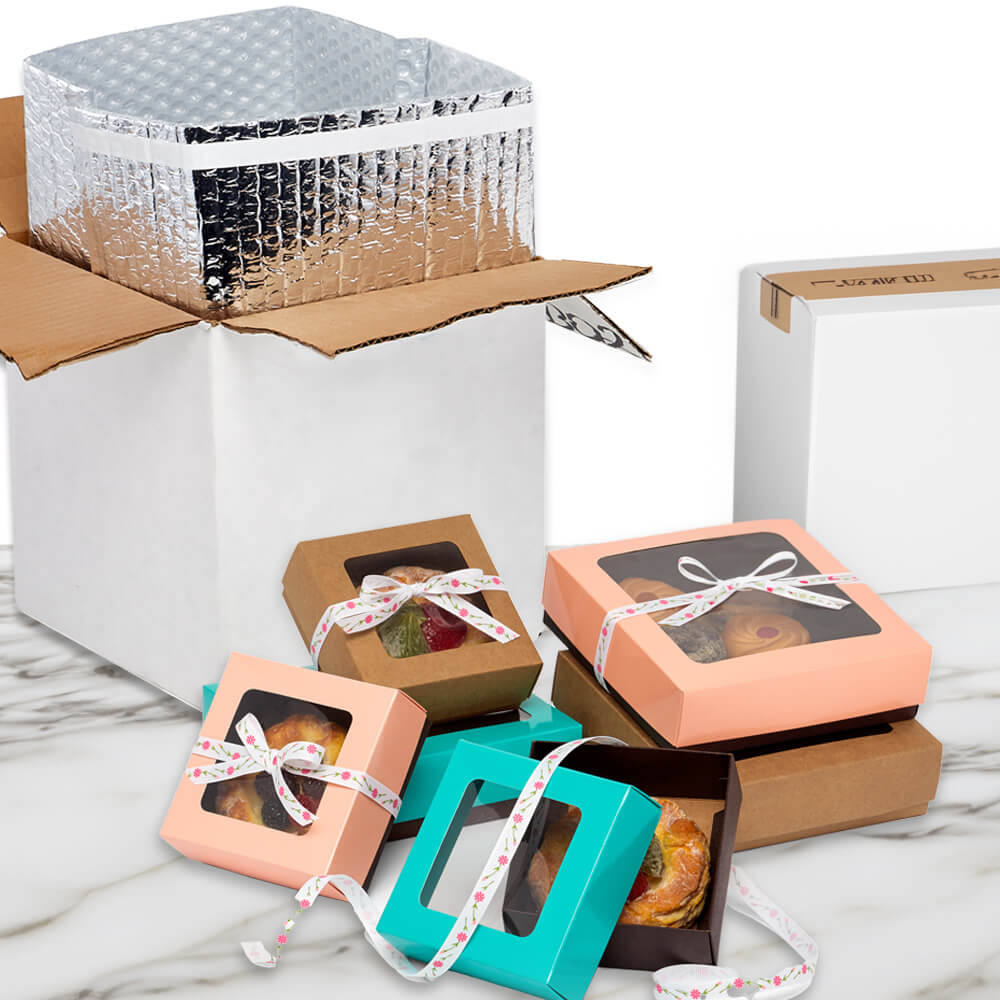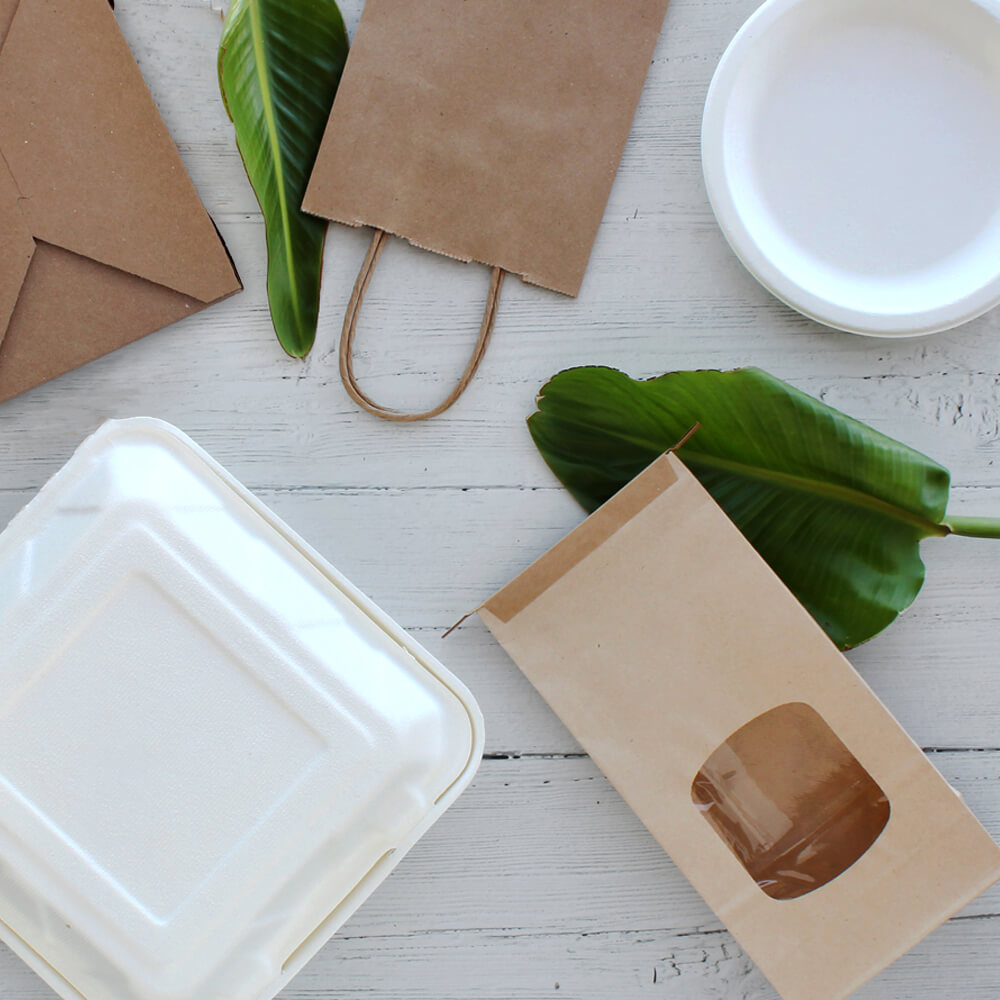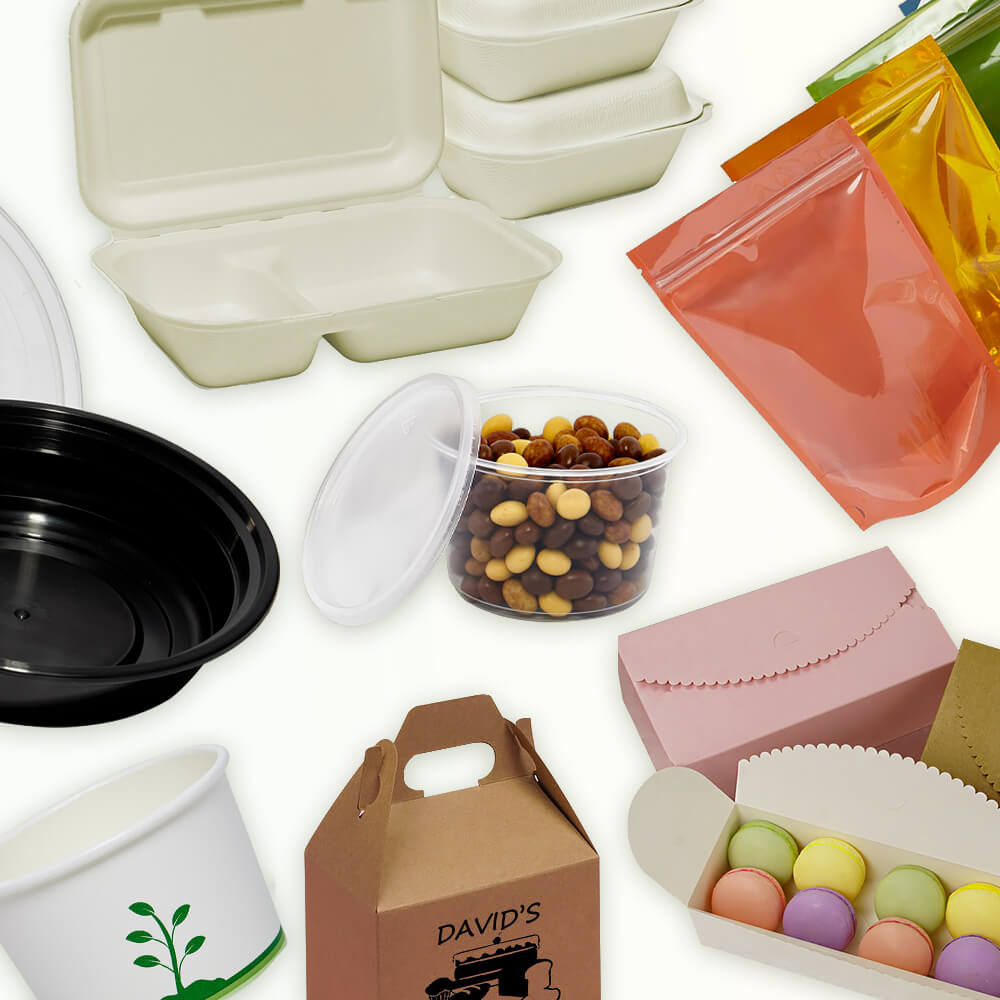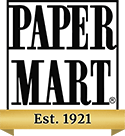When it comes to food, packaging is more than just a container – it’s a safeguard, a preserver, and an information source. It’s what keeps our favorite treats fresh, our meals safe, and our choices informed. As such, it’s vital to consider the intricacies of food packaging; such as the various types, the materials used, design nuances, and sustainability.
Join us as we explore why understanding food packaging is key to appreciating the journey from production to plate!

Importance of Food Packaging
Food packaging stands as a cornerstone in the modern food industry, playing a pivotal role in safeguarding the quality and integrity of consumables. Its importance reverberates across three critical dimensions: safety, preservation, and information dissemination.
Safety is one of the most essential primary functions of food packaging. The packaging acts as an effective barrier against external contaminants, be they physical, chemical, or biological. This function is especially crucial in a globalized market where products often traverse long distances, encountering various environments and handling conditions. By providing a reliable shield, packaging ensures that the food that reaches our tables is free from harmful elements. This upholds the trust we place in the food supply chain.
Food packaging also extends the shelf life of perishable goods. Through techniques like vacuum sealing, modified atmosphere packaging, and moisture barriers, it creates an environment that retards the natural processes of decay. This not only reduces food waste but also enables the distribution of products over wider geographical areas, ultimately benefiting both producers and consumers.
However, food packaging is also an essential conduit of information. It is the product’s voice, conveying vital details such as nutritional content, ingredient lists, allergen warnings, and usage instructions. This information empowers consumers to make informed choices about their diet and ensures that those with specific dietary needs or restrictions can navigate the market safely.
Types of Food Packaging
Food packaging encompasses a diverse array of materials and designs, each strategically employed to safeguard the quality, integrity, and safety of consumable products. Knowing these distinct types is pivotal in understanding the intricacies of the packaging process.

Primary Packaging
At the forefront of food containment, primary packaging constitutes the initial layer that directly envelopes the product. This critical layer ensures not only the physical protection of the food but also its accessibility and convenience for the end consumer. Examples of primary packaging include vacuum-sealed pouches, cans, and bottles. This level of packaging plays a vital role in preserving the product’s freshness, flavor, and overall quality.
Secondary Packaging
Secondary packaging serves as a supplementary layer beyond primary packaging. Its primary function is to group or bundle individual primary packages for collective handling, transportation, and presentation. Common examples encompass corrugated boxes, cardboard sleeves, and shrink wrap. While contributing to the safeguarding of primary packages during transit, secondary packaging also plays a crucial role in marketing and branding, providing ample space for product information, branding elements, and promotional messaging.
Tertiary Packaging
Tertiary packaging pertains to the handling and shipping of large quantities of products. This level of packaging ensures stability during transit and warehousing. Pallets, crates, and bulk containers are quintessential examples of tertiary packaging. Engineered for durability and ease of handling, tertiary packaging facilitates the efficient movement of goods across the supply chain, ultimately safeguarding the integrity of the packaged products.
Understanding these distinct types of food packaging highlights the intricate steps taken to guarantee that the food we enjoy is of the highest quality and safety standards. Each layer plays a crucial role in this journey, from production to consumption, ensuring our food arrives on our tables in the best possible condition.
Food Packaging Materials
| Packaging Material | Features | Suitable for |
| Compostable | Biodegradable, eco-friendly, suitable for organic waste | Takeout containers, cutlery |
| Recycled Paper | Made from post-consumer waste, reduces environmental impact | Wrapping paper, bags |
| Bioplastics | Derived from renewable sources, lower carbon footprint | Bottles, clamshells |
| Glass | Reusable, non-toxic, preserves food freshness | Jars, bottles |
| Eco-friendly Plastic Alternatives | Made from plant-based materials, recyclable | Cups, lids |
A Breakdown of Food Packaging Materials
The choice of materials used in food packaging holds paramount importance in ensuring the safety, quality, and shelf-life of consumable products. Each material brings forth its unique set of advantages and considerations.
Plastic Packaging
Widely utilized for its versatility, plastic remains a prevalent choice in food packaging. Its malleability allows for a wide range of shapes and sizes, catering to various product requirements. However, the environmental impact of plastic packaging has garnered significant attention. Its non-biodegradable nature and contribution to pollution have led to a growing demand for eco-friendly alternatives. Biodegradable plastics and plant-based polymers are emerging as potential substitutes, offering similar functionalities while mitigating environmental harm.
Glass Packaging
Glass stands out for its exceptional ability to preserve the taste, aroma, and quality of food products. It is impermeable, ensuring that no odors or flavors are absorbed or lost. Additionally, glass is 100% recyclable, making it a sustainable choice. It can be recycled indefinitely without loss of quality, significantly reducing its environmental footprint. However, its fragility and weight can be limiting factors in certain packaging applications.
Metal Packaging
Metal materials, such as aluminum and steel, are celebrated for their durability and protective properties. They act as a robust barrier against light, oxygen, and moisture, ensuring the freshness and integrity of the packaged contents. Additionally, metals are highly recyclable, with the ability to be reprocessed numerous times without compromising their quality. Despite these advantages, metal packaging tends to be heavier than other materials, potentially impacting transportation costs and environmental considerations.
Paper-Based Packaging
Renewable, biodegradable, and derived from a sustainable source, paper-based packaging is gaining traction as an eco-conscious choice. It provides ample opportunities for customization, allowing for intricate designs and branding elements. Moreover, advancements in paper technology have led to the development of water-resistant coatings, expanding its applicability. However, while paper is biodegradable, its production does entail some environmental impact, particularly in terms of water and energy consumption.
The selection of food packaging materials involves a delicate balance between functionality and sustainability. Each material brings forth its unique strengths and considerations. By carefully evaluating these factors, the food industry can move towards more responsible and efficient packaging practices, aligning with broader efforts to promote environmental stewardship.

Design Considerations for Food Packaging
Creating effective food packaging is an intricate dance between form and function, where the design choices must harmoniously cater to both the practical and aesthetic aspects. The key considerations that shape the design process are functional design, aesthetic design, and branding and marketing.
Functional Design
A well-crafted functional design is the cornerstone of food packaging. It encompasses elements that directly impact the user experience. Considerations such as ease of opening, portion control, and protection against external factors are paramount. Packaging should be user-friendly, allowing for convenient access to the product, while also ensuring that it serves its fundamental purpose – safeguarding the contents. Striking the right balance between functionality and aesthetics is pivotal in ensuring that the packaging effectively enhances the overall experience for the consumer.
Aesthetic Design
Aesthetic design is a powerful tool for capturing consumer attention. It goes beyond mere visual appeal; it conveys a message about the quality and desirability of the product within. The right color schemes, imagery, and overall design language can evoke specific emotions and perceptions. Aesthetically pleasing packaging communicates a level of care and attention to detail, which, in turn, elevates the perceived value of the product.
Branding and Marketing
Packaging is a tangible representation of a brand’s identity. It’s the first impression that a product makes on a consumer. Utilizing logos, distinctive colors, and typography allows for instant recognition, fostering brand loyalty. Effective branding on packaging conveys a sense of trustworthiness and familiarity. It is a strategic tool for differentiating products in a crowded marketplace. Furthermore, packaging serves as a medium for conveying brand values and positioning, allowing consumers to align themselves with products that resonate with their beliefs and preferences.
In essence, the design of food packaging is a multidimensional endeavor. It must seamlessly marry form and function, ensuring that it not only protects the product but also entices the consumer. Through careful consideration of functional, aesthetic, and branding elements, packaging becomes a powerful vehicle for connecting products with consumers on a visual, emotional, and practical level.

Sustainable Food Packaging
In a world increasingly attuned to environmental concerns, sustainable food packaging has emerged as a pivotal frontier in the battle against waste and pollution. This paradigm shift towards sustainability is reshaping the food industry’s approach to packaging, driving innovation, and redefining industry standards.
Eco-Friendly Materials
Central to the ethos of sustainable food packaging is the adoption of eco-friendly materials. Biodegradable, compostable, and recyclable materials have taken the forefront. These materials, in contrast to their conventional counterparts, are designed to minimize environmental impact. Biodegradable materials break down naturally, returning to the environment with minimal residue. Compostable materials can be organically broken down into nutrient-rich soil. Recyclable materials, when properly managed, can be reprocessed and repurposed, reducing the demand for new raw materials. However, challenges such as sourcing reliable and economically viable eco-friendly materials persist, underscoring the need for ongoing research and development.
Packaging Innovations
Cutting-edge innovations in sustainable food packaging are propelling the industry towards a greener future. Edible packaging solutions, crafted from ingredients like seaweed or rice, present a revolutionary approach. These packages not only serve as a vessel for food but can also be consumed, thereby significantly reducing waste. Plant-based alternatives, derived from renewable resources like corn or sugarcane, are gaining traction as biodegradable substitutes for traditional plastics. Furthermore, advances in technology are enabling the development of packaging that actively extends the shelf-life of products, reducing food waste at its source.
Consumer Awareness and Behavior
As consumers become increasingly conscious of their environmental footprint, their preferences catalyze a market shift. The demand for sustainable food packaging is on the rise, prompting businesses to adapt and innovate. However, the onus lies not only on consumers but also on industry players to educate and communicate the benefits of sustainable packaging choices. Transparent labeling and clear communication about the eco-friendliness of packaging materials play a crucial role in empowering consumers to make informed decisions.
Sustainable food packaging stands as a testament to the industry’s commitment to environmental stewardship. By embracing eco-friendly materials, pioneering innovative solutions, and actively involving consumers in the conversation, the path towards a greener, more sustainable future for food packaging is not only desirable but increasingly achievable. This collective endeavor fosters a harmonious relationship between our nourishment and the planet we call home.
Food Packaging FAQs
Why should I choose sustainable food packaging?
Sustainable food packaging helps reduce the environmental impact of your business by lowering carbon emissions, conserving natural resources, and minimizing waste. It also aligns your brand with eco-conscious values, appealing to environmentally-conscious consumers.
What is the difference between compostable and biodegradable packaging?
Compostable packaging breaks down into natural elements and becomes part of the soil within a specific timeframe under controlled conditions. Biodegradable packaging, on the other hand, breaks down naturally into smaller components, but the process might take longer and may not be as environmentally friendly as composting.
How can Paper Mart’s compostable packaging benefit my food business?
Paper Mart’s compostable packaging is an excellent choice for your food business as it is made from renewable resources and breaks down into nutrient-rich compost. It can be a suitable option for restaurants, catering services, and any business looking to enhance its sustainability practices.
Are eco-friendly plastic alternatives as durable as traditional plastic packaging?
Yes, eco-friendly plastic alternatives offered by Paper Mart are designed to be just as durable as traditional plastics, ensuring your food products are protected during storage and transportation. These alternatives are made from plant-based materials, making them a more sustainable choice without compromising on quality.
Can I customize the recycled paper packaging with my brand’s logo and colors?
Absolutely! Paper Mart provides customization options for their recycled paper packaging, allowing you to add your brand’s logo, colors, and unique designs. This way, you can showcase your commitment to sustainability while maintaining a consistent and professional brand image.

Sustainable Solutions for Food Packaging at Paper Mart
In our exploration of sustainable food packaging, it becomes evident that the landscape is evolving with a concerted effort towards environmental responsibility. Paper Mart stands at the forefront of this movement, offering a diverse array of eco-friendly packaging options. From biodegradable materials to innovative plant-based solutions, we are committed to providing choices that align with your sustainability goals.
As we navigate this journey towards a greener future, the impetus extends beyond industry initiatives. It is a collective endeavor, one where every choice we make as consumers, businesses, and manufacturers shape the trajectory of sustainable packaging. As such, we invite you to choose eco-conscious options, educate and inform, and let your decisions reflect a commitment to a healthier planet.
Together, we can forge a path towards a more sustainable food packaging landscape, one package at a time. Explore Paper Mart’s range of eco-friendly options and start your journey toward a greener tomorrow!

Great Blog!!!